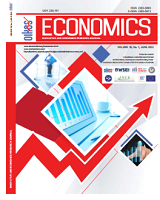Recovery of Slovenian Tourism after Covid-19 and Ukraine Crisis
Recovery of Slovenian Tourism after Covid-19 and Ukraine Crisis
Author(s): Predrag Ljubotina, Andrej RasporSubject(s): Economic history, Health and medicine and law, Policy, planning, forecast and speculation, Present Times (2010 - today), Tourism, Russian Aggression against Ukraine
Published by: Oikos institut-Istraživački centar Bijeljina
Keywords: Slovenia; Ukraine crisis; COVID-19; Tourism demand; Crisis management; Delphi method; Forecasting scenarios;
Summary/Abstract: The profound impact of the COVID-19 pandemic and the Ukraine crisis 2022 on tourism has rendered forecasts of tourism demand obsolete. Accordingly, scholars have begun to look for the best methods to predict the recovery of tourism. In this study, econometric and judgmental methods were combined in order to to forecast the possible ways to tourism recovery in Slovenia. The goals of this paper are to show and assess the current offerings and potential for the development of tourism in Slovenia, and to point out the advantages and challenges in the development of tourism in this type of destination. Statistical methods were used for benchmark analysis, while Box and Jenkins approach and ARIMA modeling were used for forecasting Slovenian tourism until 2030. The datasets are analyzed using Tableau 2022.1. Our findings show that Slovenian tourism will be slower on the uptake and is not likely to fully recover until 2026, due to COVID-19 related uncertainty. A steep jump in daily COVID-19 infections in China and the Ukraine crisis which is affecting political and economic stability in the world is also slowing down the speed of recovery. In 2019, Chinese, Russian and Ukrainian tourists generated 5% of all tourist arrivals and overnight stays. In particular Russian tourists were well-known for their high consumer expenditure and thus desirable to the destination places. To mitigate the drop in tourist arrivals, Slovenia should do two things, namely concentrate on traditional markets, i.e. Austria, Italy, and Germany, which altogether represent 1/3 of all tourist arrivals and overnight stays, and secondly, it should target new markets, bringing new, innovative products, services, and experiences.
Journal: ECONOMICS-INNOVATIVE AND ECONOMICS RESEARCH JOURNAL
- Issue Year: 10/2022
- Issue No: 1
- Page Range: 55-72
- Page Count: 18
- Language: English

